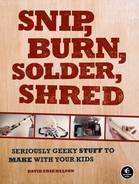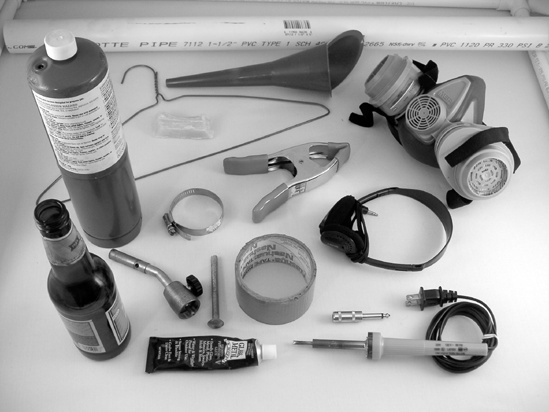a 4′ length of 1 1/4″ diameter thin-walled PVC pipe[4] (Have it cut to length at the hardware store if possible.)
duct tape
beeswax (available from most health food/dietary supplement stores, organic grocers, or beekeepers)
an old pair of cheap headphones
a #24 hose clamp (i.e., one good for pipes 1 1/16″ to 2″ and roughly 6 1/2″ long when laid flat)
a 1/4″ mono phone plug (i.e., a TS connector, like those on a guitar cable)
a wire coat hanger or similar length of rigid wire
glue suitable for working with metal and plastic
clamps or binder clips
a standard soldering kit (See the appendix.)
(optional) all-purpose indoor/outdoor Krylon spray paint for decorating your finished didgeridoo
[4] This assumes you intend to fully modify your didge by heating and twisting it. If you’re not going to do any modifications beyond adding a mouthpiece, then you might be happier with 1 1/2″ or even 2″ diameter PVC. These are a little trickier to play, since the wide bore offers little resistance (making it harder to sustain a note) and the thick walls don’t resonate very well. But the larger volume of air in the tube will offer a richer unmodified sound, and the thick walls lack the rattle characteristic of thinner pipes. In any case, you’ll almost certainly be happier if you upgrade to the beeswax mouthpiece described in Step 12.

